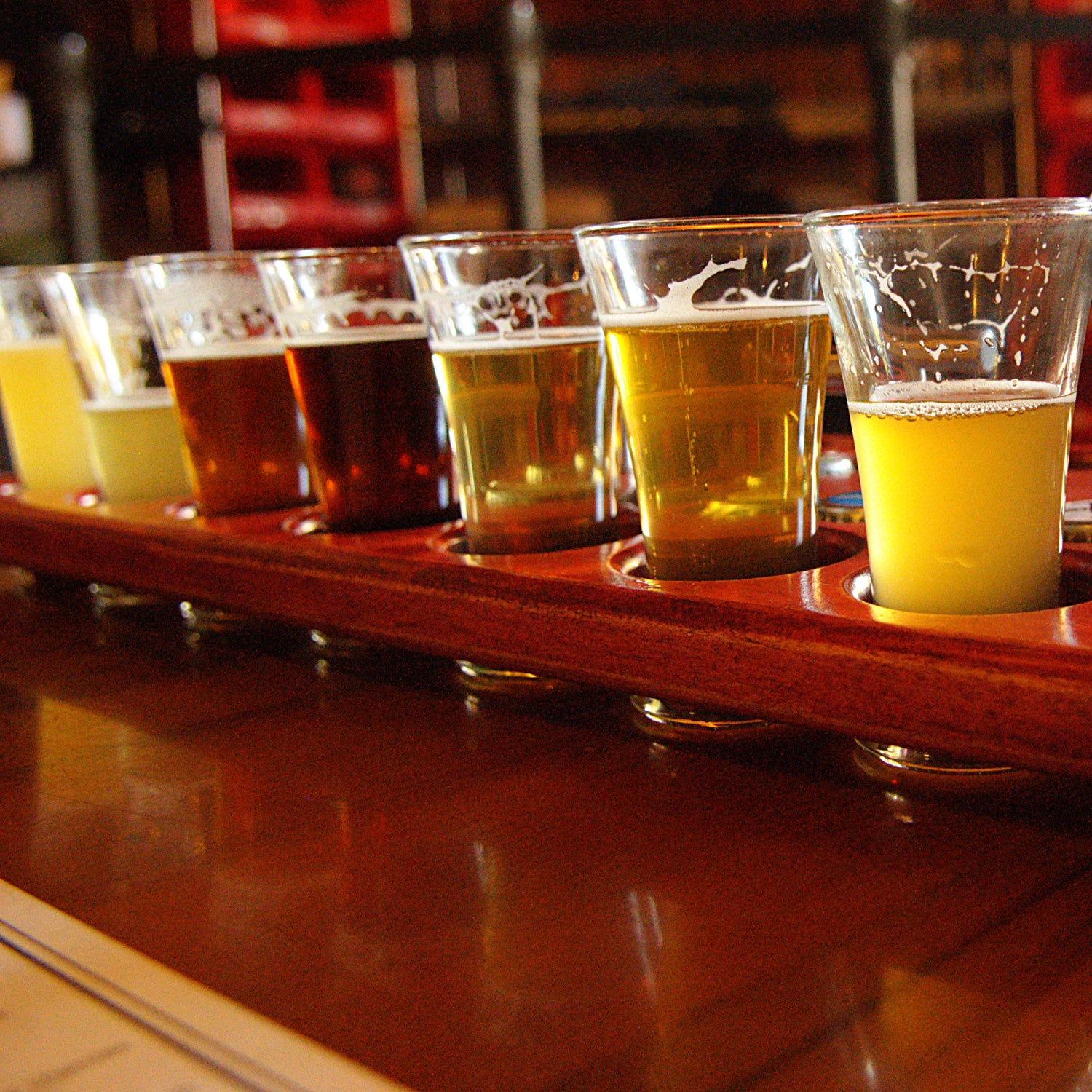You might think the sour beer trend evolved quickly, taking over bars and liquor stores seemingly overnight. But the since the 1800s, and Americans are only now starting to catch up.
Sour beer, or beer with an intentionally tart, acidic taste, is a bit of a rebel in the brewing world. It uses ingredients most brewers avoid at all cost: a strain of the wild yeast Brettanomyces and at least one of the typical souring agents—Pediococcus, Lactobacillus, and Acetabactor—which produce the acids that make sour beer, well, sour.
These microorganisms, common in breweries, ruin “normal” beer by infecting a batch and turning it rank. In sour beer, they create the unique flavor profiles that more and more people are coming to love. “Ninety-nine-point-nine percent of breweries in the world are doing everything they can to keep these guys out of their beer,” says Jason Perkins, brewmaster at Allagash. “That’s kind of the irony of it.”
Wild yeasts and bacteria typically enter the mix via open-air fermentation, intentional inoculation, or barrel aging. The result? A huge variety of sour beer that can fall anywhere from bitingly bitter to pleasantly tart. There’s a wide range of acidities and intensities, but given sour beer’s low pH, the brews often taste more like wine than typical beer and pair well with rich, salty foods.
“Even 10 years ago, wild and sour beer was not on many people’s radar,” says Ron Jeffries, who in 2004 founded , the first brewery in the United States to age all of its beer in oak barrels, resulting in a full lineup of sour, wild ales. For Jeffries, new wild yeasts and bacteria that cause souring are interesting, welcome developments for the brewing world.
Ready to try some sour suds? Check out some of our favorites:
Red Poppy Ale, 5.5% ABV
(San Marcos, California)
Brewed in a brown ale base and oak-aged for more than six months, this Flanders red ale has hints of vanilla and a mouth-puckering acidity thanks to sour cherries, secondary fermentation, and extensive aging. Proceed wisely.
La Folie, 7% ABV
(Fort Collins, Colorado)
Back in 1997, New Belgium was one of the first breweries to brew sours—and the company’s experience shows. La Folie is a delightful sour brown with strong, mixed notes of green apple, cherry, and plum skin. This beer is legendary but probably not the stuff for starters: As New Belgium writes, it’s like “biting into a fresh-picked Granny Smith apple.”
Supplication, 7% ABV
(Santa Rosa, California)
More cherries and more brown ale, but this time aged in used pinot noir barrels. Described as a little “funky,” and brewed with both Lactobacillus and Pediococcus, this beer has double the sour, an immediate pinot flavor, and good carbonation.
Humidor Series American Sour Ale, 5.8% ABV
(Tampa, Florida)
With tartness owing to Lactobacillus, this ale is citrusy and has notes of tobacco and pepper thanks to the addition of Spanish cedar. Look out for other Cigar City sours in limited release—brewmaster Wayne Wambles creates winner after winner.
Apricot Ale, 8.5% ABV
(Portland, Oregon)
Calling itself the “House of Sour,” Cascade Brewing is one of the best-known breweries for sours in the Pacific Northwest. Though it’s always hard to choose a favorite, Cascade’s Apricot Ale comes out on top. Comprising a blend of blond ales that have been barrel aged for up to one year, the mixture is then aged on apricots for an additional eight months. Not too sweet and not too sour, this one finishes with a lingering acidity and is the perfect refreshment for hot summer days.
Interlude, 9.5% ABV
(Portland, Maine)
Moderately tart, this brew is created with two strains of yeast—including a “house” Brettanomyces. This fermentation combination and the ale’s aging in red wine barrels create a dry, lightly carbonated brew with plum, oak, apricot, red pepper, and sourdough flavors. It might not sound like a winning combination, but the ale’s deep flavor profile and dynamism make it an excellent pairing with almost anything.


